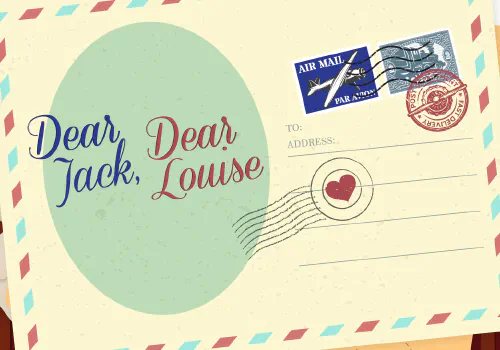By Don Leavitt
What do Disney’s Beauty and the Beast and the cult-hit Little Shop of Horrors have in common? Well, they both involve monsters and unlikely romances. But the biggest similarity between the two is the creative team behind them. Both are the work of Alan Menken and the late Howard Ashman. According to Hollywood legend, Ashman was just eleven years old when he saw the original Little Shop of Horrors, a music-less B-movie by Roger Corman, made in 1960 for less than $30,000.
When Menken and Ashman began working together several years later, they turned Little Shop of Horrors into a musical and opened it off-Broadway at New York’s Orpheum Theatre. It has since won several awards, including the New York Drama Critics Circle Award for Best Musical, and it’s now the third-longest running and highest grossing musical in off-Broadway history. In 1986, director Frank Oz turned the musical into a movie with a cast that included Rick Moranis and Steve Martin.
All three versions have now become cult classics because each, in its own way, has an innocent charm blended with a wicked sense of humor and an ageless story of basic human nature: unrequited love and a desire to be more than what we are.
At its heart,Little Shop of Horrors is a Greek moral tragedy in which a young and fallible hero seeks to improve his life by exploiting a higher power. In typical, Greek fashion, the angry Gods don’t just punish the hero, but extend their wrath to everyone the hero touches, including those he loves.
A trio of girls named Ronnette, Crystal, and Chiffon replaces the Greek Chorus inLittle Shop of Horrors, and they sing in the style of the ’60s girl groups for which they’re named. Just like the Chorus in Greek tragedies, the trio serves as narrator and moves the action along through musical interludes meant to help the audience keep up with the story. In the beginning, they offer the audience a musical warning to avoid the dangers they are about to see, in the title song “Little Shop of Horrors.” And at the end, when everything has gone terribly wrong, the Chorus and the characters offer the audience a moral to the story, in the song, “Don’t Feed the Plants.”
The action takes place in a run-down flower shop in a run-down neighborhood, and the hero is Seymour Krelborn, an orphan living a life of indentured servitude to the shop owner who took him in. Seymour is innocent and insecure, a nerd who dreams of escaping and making something better of himself. Seymour is also secretly in love with his co-worker, Audrey, a pretty but dizzy blonde who dates bullies and no longer believes life can be better. Everyone seems down on their luck, until Seymour introduces them to the strange and wonderful plant he says he discovered one day during an eclipse of the sun.
They place the plant in the flower shop’s window, and things immediately improve. Soon the shop is full of customers, and Seymour becomes famous. Seymour cares for the plant and names it Audrey II, in honor of the girl for whom he still secretly pines. But he quickly discovers there’s a price to pay for his good fortune: the plant, he learns, has a taste for human blood.
At first, it’s a price Seymour willingly pays. In exchange for all that he wishes, Seymour offers the plant his own blood, and Audrey II begins to grow. However, the more it grows, the hungrier it gets, and soon Seymour realizes he doesn’t have enough blood to satisfy its hunger. Suddenly, Audrey II reveals it can talk, and Seymour learns it’s a man-eating plant. Audrey II strikes a bargain with Seymour, promising to give Seymour all he desires as long he continues to feed it.
The gentle-hearted Seymour is reluctant to hurt anyone, but then he sees Audrey with her abusive boyfriend and decides that this could be his chance to save her. Killing the boyfriend is easy to justify, because it eliminates an obvious evil and opens the door for true love. But soon after, Audrey II’s hunger spirals out of control. One person after another becomes plant food, and although Seymour does indeed get everything he wants, he realizes his success will only continue with more killing. At last, Seymour decides he must kill Audrey II, only to discover the plant is now too big and too powerful for him to handle. In the end, Seymour himself is consumed by the curse that he’s created.
Like the gods in Greek tragedy, Audrey II views humanity as a pathetic race made powerless by their passions. Meanwhile, the humans innocently pursue their dreams but are unable to see the dangers of their actions before it’s too late. Ultimately, the hero is unable to handle the evil he unleashes, and, at the end, everyone is doomed to misery and death because of the hero’s folly. As the play ends, the Chorus in Little Shop of Horrors sings “Don’t Feed the Plants,” and the message to the human audience is to be careful what you wish for. As Seymour learns, there is a terrible price to pay when you get what you want, instead of what you earn.









